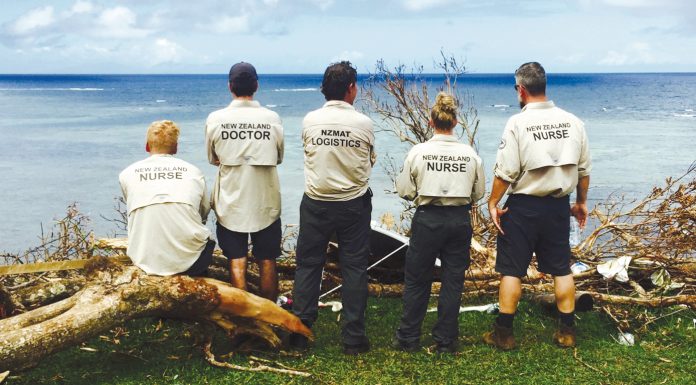Expecting bullied nurses to toughen up is not the answer, says workplace bullying researcher KATE BLACKWOOD.
The Massey University management lecturer interviewed 34 bullied hospital nurses for her PhD thesis and was shocked by the impact bullying can have. The majority of nurses had reported the bullying but she spoke to only one nurse whose complaint had been successfully resolved. Less than a handful had managed to stop or control the bullying by directly addressing the bully themselves while the remaining interviewees were either still being bullied or had resorted to changing jobs (see full research findings in sidebar below).
“The unfortunate reality is that at the moment targets (bullying victims) leaving is the best chance of getting away from workplace bullying,” says Blackwood.
Bullying an organisational problem
Blackwood’s research followed on from a 2009 workplace bullying study which found high levels of workplace stress (75%) and workplace bullying (18%) in the New Zealand health and education sectors.
A number of health sector respondents in that research noted that bullying was a “big problem” within nursing – specifically ‘manager-to-nurse’ and ‘consultant/doctor-to-nurse’ but also ‘peer-to-peer’ bullying.
The focus of workplace bullying research has moved on from looking at the personality traits to seeing bullying as a product of the work environment and placing the onus on organisations – like health sector employers – to do something about it.
“Bullying wouldn’t be as rife in health care as it is right now if there wasn’t a culture of tolerance for bullying,” says Blackwood. “If there wasn’t a culture of nurses being expected to harden up and cope with these behaviours.”
She says while resilience is important it is not the answer to workplace bullying and there needed to be a culture change from the top to create a workplace environment where responding to bullying is taken seriously.
“As when bullying is still tolerated and normalised, managers aren’t following it up because they don’t have to.”
Leadership training for managers essential
The culture change needs to include training and support for direct line managers, like charge nurse managers, who are often the first port-of-call for nurses reporting bullying, says Blackwood.
Particularly as one of her key research findings is that bullied nurses’ reports of bullying are often snubbed or trivialised so they are put off reporting again.
Blackwood says poor leadership skills is one of the workplace factors that heightens the risk of bullying and is not helped by nursing’s tradition of often promoting managers based on clinical rather than leadership abilities.
This can leave managers not only struggling to respond appropriately to bullying reports but also with handling performance management issues which – if done badly – can be perceived as bullying by the nurses involved.
So this is why leadership training in areas like identifying bullying and conflict management skills are very important, believes Blackwood, so fewer managers’ default action is little or ‘no action’.
A lot of the behaviours that can constitute bullying can be subtle and appear almost petty or trivial – like being ignored or having your work criticised – but when they are targeted and happen over and over again they can become really harmful, says Blackwood.
On the other hand, a one-off incident, like a colleague losing their temper, is not bullying and neither is undergoing performance management. There also can be a fine balance between identifying bullying too early and creating a greater issue than actually exists, and identifying it too late when the bullying has escalated and low level interventions like mediation are less likely to be effective.
Focus groups that Blackwood held with managers, and others at the receiving end of bullying complaints, expressed how very difficult they find dealing with bullying cases – often taking the strain home with them at night. They spoke of sometimes being hamstrung from intervening by the bullied nurse not wanting the ‘bully’ to know about the complaint for fear of repercussions; and also the difficulties of dealing with a generation more accustomed to praise than criticism, which could make it very difficult to performance manage some staff.
Blackwood says different strategies were also needed for dealing with, for example, the ‘known bully’ who gets away with it as they are thought irreplaceable; than were needed for the ‘teacher-student’ bullying of a new graduate nurse too scared and inexperienced to realise they are being targeted.
Bullying reporting channels also needed to be clear, well known and reflect the complexities of bullying. So expecting nurses to report bullying via a DHB’s incident reporting system was “extremely problematic”. It could also be a “huge problem” if the only informal reporting channel is a nurse’s direct line manager, when it is the manager they are alleging is the bully.
Funding constraints one bullying barrier
Blackwood is keen to emphasise her research is “not about hauling DHBs across the coals”.
She says the dilemma is not a lack of DHB awareness of bullying as an issue but having the tools and knowledge to change the workplace culture and reduce the risk of bullying and bullying going unchecked.
At the same time funding constraints help not hinder the risk of workplace bullying – because as one nursing leader put it, a funding ‘sneeze’ at the top can impact like ‘pneumonia’ on front line staff. And Blackwood says stress is definitely one channel through which bullying develops and some of that stress also definitely comes through underfunding and the pressure that can place on frontline nurses.
“One of my key strategies (for addressing workplace bullying) is the need to work on organisational culture change but that can take a huge amount of time and resources – both of which DHBs have very little of.”
But Blackwood doesn’t believe this means change can’t happen –she has heard examples of simply the change of DHB leadership making a difference to a hospital’s readiness to intervene on bullying. She is also keen to contribute herself by investigating tools that could make a difference including seeking research funding to implement and evaluate a bullying intervention.
Because leaving their job should be the last resort, not the only option, open to a bully’s victim.
Be nicer to each other
A lack of kindness and courtesy is as much or more of an issue than bullying, believes Sue Hayward.
The director of nursing at Waikato District Health board said her fellow nursing director colleagues are aware of concerns about bullying and she personally investigates any that come to her attention.
“Many things are not at all bullying – just someone who has had a bad day and has interpreted somebody’s action in a different way,” says Hayward.
“But I think, with the increasing pressures placed on individual nurses and nurses as a whole, we have stopped being quite as kind to each other as we should be.”
She adds that in society as a whole she sees a real lack of courtesy.
“Standards of good behaviour just don’t seem to exist or don’t seem to be embedded in society to the degree that they once were.”
Hayward says nurse managers wanting to create a caring environment for their nursing staff need to “role model, role model, role model”.
“Role model, listen to staff, acknowledge their concerns, never minimise them or never marginalise an individual because of what they are saying – that’s my mantra.”
That was then and this is now
Bullying is cruel and destructive, wastes energy, causes nurses to leave the workforce and creates untold misery, says Jenny Carryer.
The Massey University professor and executive director of the believes nursing should be very concerned about it.
But whether bullying as it is defined today has always been a factor in nursing she finds hard to say. Back in the early 1970s, when she trained, nursing was so hierarchical and militaristic that she doubts many recognised they were being bullied although they almost certainly were. The difference was that it was not individualised bullying and “there was a sense we were all in it together”.
“We used to do ridiculous things like a first-year student had to stand up when a second-year student came into the room.
“And you had to turn sideways when the matron was walking down the corridor – the most extraordinary, antiquated, bizarre behaviours that we took as normal.”
That type of behaviour was in its dying days in the early 70s but student nurses still had to accept they were at the bottom of the pecking order and senior people would be “very, very hard on them” or they left. And leave they often did. “The attrition rate was huge.” It was also one of the reasons that training was shifted from the hospital model to polytechnics.
Carryer says individualised bullying between nursing colleagues today is “absolutely an oppressed group behaviour” with the sociological literature describing it as horizontal violence. “So where nurses feel hugely valued – and hold appropriate power and control over their own destiny – I suspect that bullying decreases markedly.”
No magic answer
Bullying is a reality in all workplaces, says Anne Brinkman.
Add to the mix hospital nurses working under the everyday challenge of rostered and rotating shifts and the pressure of constant change and it is no surprise that there is bullying in nursing, believes the professional nursing advisor for the New Zealand Nurses Organisation.
Brinkman says there is no magic answer to the systemic and human factors that lead to some people bullying and being bullied. But probably not helping was the constant push for change, calls to do more with less, stress caused by rostered and rotating shifts, and a lack of mental health skills and political awareness in many nurses.
“We might clinically be able to help someone with blood pressure but we don’t necessarily get it right when it comes to helping ourselves be more resilient and less bullied as a profession in an increasingly stressful environment.”
Brinkman says though there is no single answer to solving bullying, nurses should remember standard 1.1 of the Nursing Council Code of Conduct – which says treat people with kindness and consideration.
Also a “skilled, experienced and balanced charge nurse manager (CNM) who can lead, manage and inspire is worth their weight in gold” believes Brinkman. Though she echoes Karen Blackwood in saying too many CNMs are promoted because of their clinical expertise, and historically and nationally there was “very inadequate orientation” for CNMs who need leadership education and support to do their job well and create a caring environment for their staff.
But meanwhile nurses can be aware of their own strengths and weaknesses, work on having a balanced life and strive to be kind, considerate and supportive of each other.
Bullying Resources
- New Zealand Nurses Organisation workplace bullying information and guidance:www.nzno.org.nz/bullyfree
- WorkSafe New Zealand bullying prevention tools:
- Lifeline Aotearoa: 24-hour telephone counselling 0800 543 354
- Netsafe website has a page dedicated to advice on online bullying and harassment www.netsafe.org.nz or you can email them directly for advice at: [email protected] or phone them on 0508 638 723
Workplace bullying definitions:
Numerous negative behaviours towards a single target over a period of time that makes the target feel powerless and causes personal harm.
Definition used in Kate Blackwood research
Workplace bullying is repeated and unreasonable behaviour directed towards a worker or a group of workers that creates a risk to health and safety. Unreasonable behaviour includes victimising, humiliating, intimidating or threatening a person.
Definition used by WorkSafe New Zealand
Nurse bullying research findings
- BULLYING VICTIMS: 40 hospital nurses from the three District Health Boards in the study who believed they had been a target of workplace bullying. Of those 40 nurses 34 met the study’s bullying definition and were included in the research findings (of the six not included five had experienced a one-off incident and one said the whole team was bullied equally).
- BULLYING BEHAVIOURS: The most common bullying behaviours reported by the 34 were criticism of their work (18), micro-managing/controlling behaviours (13) and general aggression and intimidation (11). Followed by being ignored (9), screaming and yelling (8), public humiliation (7), blaming (6), withholding information and/or work opportunities (7) and inflexibility with hours of work (5).
- BULLYING CONSEQUENCES: The most commonly reported consequence of the bullying was deteriorating levels of confidence (11), feeling incompetent/making errors (9), crying (8), wanting to resign (5), not wanting to go to work (5), sleeplessness (4) and taking sick leave (3).
- BULLYING REPORTING: The majority of the participants (28 of the 34) reported the bullying formally or informally with the most common approach being to either their direct line manager (15) or another manager (17), fewer approached human resources (9) or their union (6) or external agents like a lawyer or Worksafe New Zealand (5).
- BULLYING RESOLUTION:
- Just over half (15 of the 28) said their complaint to one or more agents led to some form of action but only one said that action had led to successfully stopping the bullying.
- The other 13 said there was no action following their complaint with common responses being the complaint recipient believing the target was at fault, the complaint wasn’t worth intervening on, making excuses for not acting or not wanting to ‘rock the boat’.
- The most common way reported for a bullying situation being resolved was for the bullying ‘target’ (12) or the ‘bully’ (2) to change jobs. Four bullying targets reported the bullying had either stopped or was controlled following them directly addressing the bully about their behaviour and there was one case of bullying stopping following a formal complaint. The remaining 15 said the bullying continued
Kate Blackwood (2015) Workplace Bullying in the New Zealand Nursing Profession: The case for a tailored approach to intervention, PhD thesis, Massey University





















